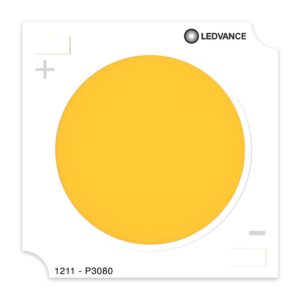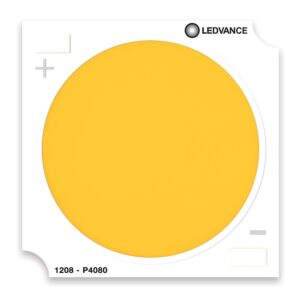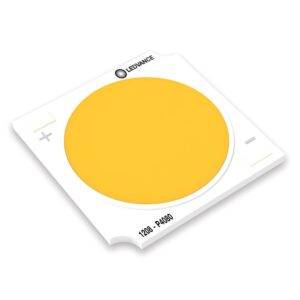
Facade Lighting Techniques for Buildings
Facade lighting of a building can create beautiful and attractive effects using different techniques. Here are some of these techniques:
- Symmetric Lighting:
- Using concentrated lights to create symmetry on the facade.
- Suitable for buildings with classic and symmetrical designs.
- Asymmetric Lighting:
- Using various and scattered lights to create modern and dynamic effects.
- Suitable for buildings with modern and asymmetrical designs.
- Combined Lighting:
- Combining direct and indirect lights to create a balance between light and shadow.
- Using projectors and wall lights to highlight architectural details.
- Colorful Lighting:
- Using colored LED lights to create special and different effects.
- Suitable for special occasions and creating attractive visual effects.
- Accent Lighting:
- Using concentrated lights to highlight specific parts of the facade, such as columns, windows, and entrances.
- This technique helps to showcase architectural details.
- Ambient Lighting:
- Using soft and scattered lights to create ambient lighting.
- Suitable for residential and commercial buildings that require soft lighting.
- Dramatic Lighting:
- Using large projectors and concentrated lights to create dramatic effects.
- Suitable for public and commercial buildings that need to attract attention.
- Layered Lighting:
- Combining multiple layers of lighting to create more depth and attractiveness.
- Using different lights to highlight various layers of the facade.
- Modular Lighting:
- Using adjustable lighting modules to change the lighting effects of the facade.
- Suitable for buildings that need variety in lighting.
- Smart Lighting:
- Using smart lighting management systems to automatically adjust light intensity and color.
- Optimizing energy consumption and creating diverse lighting effects based on needs.
- Static Lighting:
- Using fixed lighting fixtures for steady light with no variable intensity or color.
- Low-energy lamps are used for this lighting method.
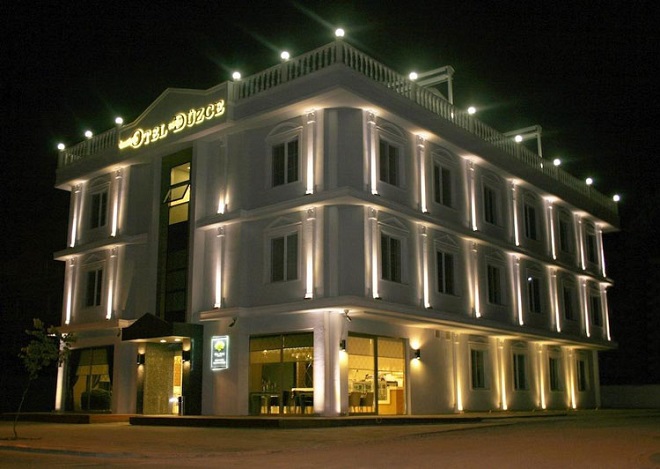
Principles of Lighting a Three-Story Building Facade
Lighting the facade of a three-story building plays a crucial role in enhancing its appearance and increasing its attractiveness. This lighting not only contributes to beauty but also enhances safety and security. Here are some key principles for lighting the facade of a three-story building:
Key Principles of Facade Lighting:
- General Lighting:
- Use projectors to illuminate the entire facade.
- Install lights at the base of the facade and direct the light upwards for even lighting.
- Accent Lighting:
- Highlight architectural details such as windows, columns, and balconies.
- Use wall and recessed lights to create focused lighting on specific areas.
- Layered Lighting:
- Combine general and accent lighting using different lights.
- Create depth and more attraction by using different layers of light.
- Use of Colored Lights:
- Use colored LED lights to create special and unique effects.
- Adjust lights to change colors for different effects.
- Energy Management:
- Use LED lamps for their low energy consumption and long lifespan.
- Implement smart lighting management systems with timers and motion sensors.
- Safety Considerations:
- Install and use lights resistant to environmental factors like water and dust.
- Follow safety guidelines when installing lighting equipment to prevent accidents.
- Architectural Harmony:
- Lighting should be in harmony with the building’s architectural design.
- Create a suitable balance between light and shadow to improve the facade’s appearance.
- Light Intensity Adjustment:
- Adjust light intensity based on needs and location.
- Avoid excessive and dazzling lights.
Lighting Methods:
- Projector Lights: For general lighting and illuminating the entire facade.
- Wall and Recessed Lights: For accent lighting and highlighting architectural details.
- Colored LED Lamps: To create special effects and change light colors.
- Smart Lighting Management Systems: To optimize energy consumption and automatically adjust lighting.
Types of Facade Lighting Equipment for a Three-Story Building
To illuminate the facade of a three-story building, various equipment can help create beautiful and efficient effects. Here are some types of suitable equipment for facade lighting:
- Projector Lights: Produce strong and concentrated light; suitable for general facade illumination.
- Wall Lights: Installed on walls; create direct or scattered light to highlight details.
- Recessed Lights: Installed in the ground or surfaces; produce direct light upwards to highlight pathways.
- Colored LED Lights: LEDs capable of changing colors; create special and attractive effects.
- Solar Lights: Use solar energy; no need for electrical wiring.
- LED String Lights: Highly flexible; suitable for facade decoration.
- Smart Lighting Management Systems: Automatically adjust intensity and timing of lights; remote control.
- Jet Lights: Concentrated and adjustable light; suitable for highlighting architectural details.
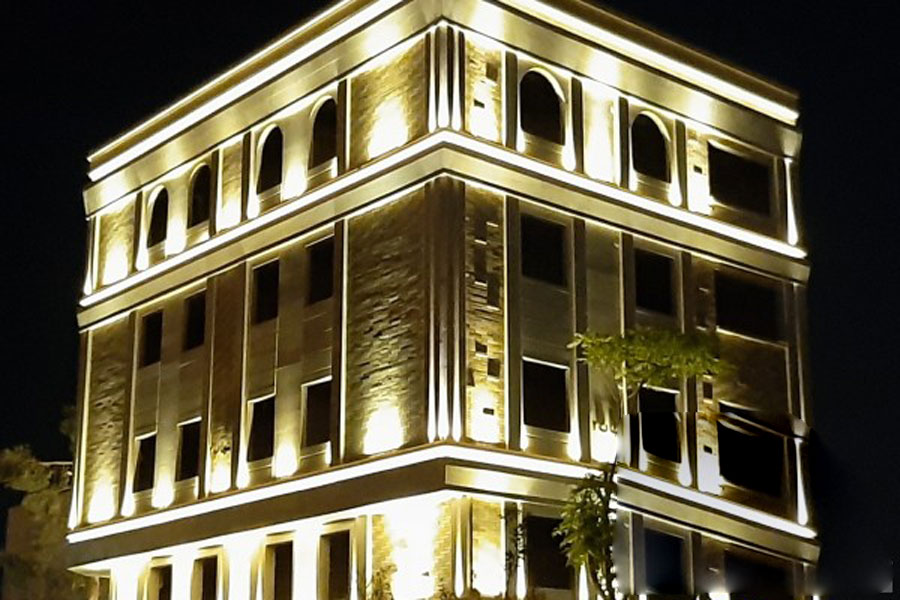
Ledvance LEDs Suitable for Facade Lighting
Ledvance LEDs are an excellent choice for facade lighting due to their low energy consumption, long lifespan, high light quality, weather resistance, and color variety. These features make these LEDs ideal for creating attractive lighting effects and improving ambient lighting in various commercial, residential, and public buildings. Choosing the right color and environmental resistance are important considerations when selecting these products.
An example of Ledunce LEDs for building facade lighting
Conclusion
Lighting the facade of a three-story building using various types of lights can significantly enhance the beauty and attractiveness of the building. By using this equipment and adhering to the principles of lighting, you can transform the facade of your three-story building into a beautiful, safe, and pleasant space. Proper lighting plays a crucial role in creating a sense of security and appeal.

 English
English العربية
العربية

